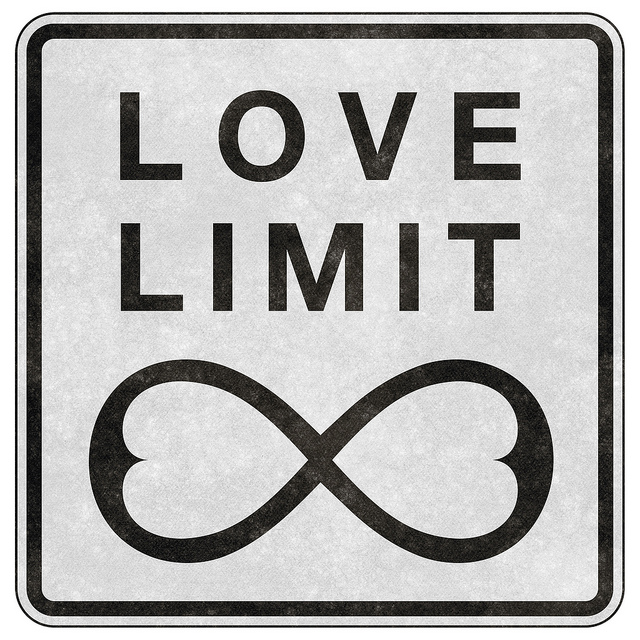
by Rami Henrich, LCSW and Cindy Trawinski, PsyD
This is the third in a series of articles about the intersections of polyamorous identities and psychotherapy, adapted from Rami Henrich and Cindy Trawinski’s article in Sexual and Relationship Therapy, “Social and therapeutic challenges facing polyamorous clients,” as well as supplemental materials that didn’t make it into the published article. In this installment, we look at social challenges facing those in polyamorous relationships..
Click here to access part 1 of this series. For part 2, click here.
Nine of the 12 participants in Rami’s original study reported struggling with experiences of marginalization directly associated with their polyamorous lifestyles. Marginalization can come from inside their polyam relationships, from extended family members, and from mainstream society. Contemporary US culture valorizes monogamy and often overlooks relationship structures that diverge from conventional forms.1 From health clubs that provide family memberships only to conventional families or teachers who squirm when three adults attend parent teacher meetings, to laws that recognize only married couples as legitimate family members, contemporary US culture rewards and reinforces (ostensible) monogamy.
Internalized Marginalization
Such forms of marginalization frequently surfaced during Rami’s research interviews. Nine of the 12 participants reported feeling social pressure to choose monogamy over having multiple committed partners. Kelly, a 32-year-old divorced mother of three, reflected on her attempts to reconcile her early pull towards polyamory with social expectations that she embrace monogamy. While Kelly knew from experience that she could “have strong emotional connections to more than one person at the same time” without cheating:
It became something that I put aside… if I am in a relationship, there is a possibility that I could … fall in love with [someone else] and that is a problem. Society says I am not supposed to do that. [It was easiest to avoid talking] to other people that I found interesting and attractive when I was in a relationship.
Kelly highlighted the difficulty individuals face upon becoming aware of polyamorous inclinations or considering non-monogamy. As a teenager, Kelly wrestled with mainstream expectations and her impulses toward loving multiple people. The pressure to disavow her feelings reflected marginalizing forces in the community around her. Her resolution to avoid talking with other men she found attractive reflected an inner marginalizer, internalized polyamphobia and shame about her polyamorous attractions.
Institutionalized Marginalization
Two participants reported discrimination and specified a lack of legal protections related to shared property, inheritance, child custody, and hospital visitations. Participants also routinely described a larger culture from which they were marginalized and struggled to reconcile their desire for full privileges with their wish to honor unconventional parts of themselves.
Ted identified legal ambiguities related to children and property as a significant challenge:
The law revolves around precedent and there is no precedent here…. [our] society …is based on family life… so I think that anything—polyamory or communal living—does not threaten it [the culture] but it treads around the perimeter where the boundaries are vague. Society has a hard time interacting with it [polyamory]… there is a lot of havoc that can be caused by seemingly innocent stepping outside of convention… [polyamory] is one of those cases. It is a social experiment in progress and… could get messy.
Ted spoke of explicit marginalizations that are codified or unaddressed by the law, and “messy” areas with vague boundaries. In such lawless places, there are no clear precedents.
Lisa, a 50-year-old woman, described the global impact of a culture of non-acceptance:
The culture … does not accept us [which] takes some joy away from our life together … the most insidious way is the … pervasive subtleties that … keep a kind of exuberance out of our relationship. …It is a big obstacle… Without that really deep acceptance from the culture, we are just not free.
Respondents’ compromises, fears, and losses illustrate three manifestations of marginalization: implicit cultural messages, institutionalized discrimination, and internalized oppression. Navigating mazes of explicit and subtle marginalization is very challenging, and it is easy to internalize cultural messages and believe that something is wrong with an individual or a relationship, when institutionalized marginalizations and subtle cultural conditioning are at play. Unconscious internalizations of societal marginalization have been an ongoing challenging for many of the participants in this study.
Disclosure
Eleven of the 12 participants found disclosing their polyamorous identity or relationships to family, friends, and community to be challenging. Disclosure implies that a person has both a public and private identity. When members of a marginalized group are not readily visually identifiable, they inevitably face questions about disclosure.2 Rather than a single decision, announcement, or event, disclosure is an ongoing process of decisions across the lifespan. For polyamamorists, disclosure is a process that includes coming out to oneself, potential or current partners, friends and family, and a myriad of people in public life where the question of one’s relationship status is relevant for legal, institutional, commercial, vocational, social, or other reasons.
Society in the US is based on a system of institutionalized compulsory monogamy;3 therefore, most people grow up thinking that they will be monogamous and heterosexual. This is an often-circuitous process complicated by society’s lack of awareness and confusion about non-monogamies that takes place over time. Participants reported wondering what being polyamorous would say about them, what others would think, and how others would respond. Participants reported a range of responses to disclosure of polyamorous identity, spanning from warm acceptance to confusion or indifference to condemnation. For many, telling others that they are actively involved in or considering a relationship that runs counter to mainstream expectations and values means having to move away from their presumed identity of “normalcy” and the social safety that it affords.
Sue, a 42-year-old woman, described her attempts to conceal her polyamorous relationship, and the rejection that can follow a disclosure. A second-generation polyamamorist, Sue remembered when her uncle rejected her mother (his sister) for her involvement in a polyamorous marriage, and her own difficulties at school when classmates discovered her parents’ polyamorous relationship:
It has been quite a… painful [journey], even before I heard the word polyamory… My uncle said, “This is unacceptable, you can’t do that!” [He] took the stance that my father was an abusive, bad man, and if my mother was going to stay with him, he was going to have nothing to do with any of us.
When Sue was 13, she broke the family’s unspoken rule not to tell others and Sue told a friend, who then began telling other friends, and word about Sue’s unusual family spread throughout the school. When Sue told her mother, mom got upset:
They were doing their thing, and I was NOT supposed to talk about it, it was none of my business… Their discomfort with the situation made it uncomfortable for me. They basically said it was nobody’s business outside the family, … So [dad’s other partner] was [described as] a friend of the family, and if anybody poked or said “I don’t understand” they were considered rude.
Sue’s family story illustrates some of the complexities related to disclosure. Adults in Sue’s family decided to conceal their relationship beyond the immediate family. Perhaps in an effort to protect Sue, her mother forbade her to share the details of their family life with others, a move that left Sue feeling isolated and lacking in parental support. Sue’s parents’ attempts to avoid discrimination and conceal their relationship lead them to preemptively criticize or reject others, potentially increasing their isolation and reducing social support.
Disclosure can pose difficult challenges for long-married couples exploring polyamory and telling their grown children and longtime friends. After a year and a half exploring a polyamorous lifestyle, Fred (in his 60s) identified as polyamorous, while his wife, Nancy, did not. Each reflected on what it was like to reveal their polyamorous explorations. After Fred’s first relationship with another woman, he worried that disclosing his polyamorous identity to his oldest son might damage their close relationship.
My children were raised Jewish… . My eldest son is now an Evangelical Christian. My fear would be that if I told [my son] that I was polyamorous, he probably would never talk to me again. This is our [Fred and Nancy’s] relationship. I see no need to out us to the kids.
Nancy reported that her attempts to accept and support her husband’s exploration of polyamory were very challenging for her friends. Nancy feared that her friends’ monogamous identities may keep them from being able to accept her choices.
Some of my girlfriends are… totally anti because it was a “don’t ask/don’t tell..”. which in hindsight was not a healthy decision. We can be understanding of LGBT and [my friends] can too, but polyamory is something that I think the “normal” monogamous couple can’t grasp… First thing they ask “Is that swinging?” and I could see the disgust in her face.
Because most people in the US are unfamiliar with polyamory and socialized in a culture founded on compulsory monogamy,4, 5 they can be quick to reject and harshly judge polyamorous people. Anna’s experience exemplifies this often challenging process of disclosure. Anna’s 15-year marriage to James ended painfully when James was unable to accept exploration of polyamory. For three years, Anna has been with Paul, who has been married to Rita for 26 years. Paul reported that Rita was aware of and open to his polyamorous arrangement with Anna.
[Disclosing] has been the most shattering, horrible part. I have no relationship with my siblings except for my younger brother, who does not know… because they have been extremely judgmental and condescending and horrible… I don’t know which has been worse, the separation from my husband or being rejected and abandoned by my older brother, sister, by friends.
Anna’s brother yelled at her and Anna’s sister made it clear she never wanted to meet Paul. While some of Anna’s friends were supportive, two of her closest friends of 20 years “dropped” her. They saw her relationship with Paul as an affair, an illegitimate relationship, and accused her of infidelity and narcissism.
I got nothing but judgment, condescension, and finally they stopped calling no explanation. There have been friends on the periphery who have backed away… There are days when I wonder if it was worth it. Then, I think about Paul and of course, it was worth it. I cannot imagine not having him in my life in an important way. But, boy, it came with such a price, and it is still unfolding.
For Anna, disclosure meant significant losses and unanticipated reactions to her relationship with Paul. This complexity and unpredictability of others’ reactions prove a heavy social and emotional burden for some polyamamorists. Family and friends’ sometimes expressed harsh or disturbing reactions, and even close friends formerly perceived as tolerant sometimes proved unable to expand coupled relationships. In addition to fears of rejection or public scrutiny, internalized oppression may cause some polyamamorists to remain closeted or to disclose sparingly.
Internal and external marginalization contribute to the stresses and complexities polyamorous and consensually non-monogamous individuals feel as they navigate who to disclose their identity to and when to do so. An awareness of these concerns in therapy will help clients to feel welcome and understood by the therapists working with them.
1 Mint, 2006
2 Goffman, 1963
3 Emens, 2004
4 Emens, 2004
5 Mint, 2010
Bibliography and Further Reading
Emens, Elizabeth F. (2004). Monogamy’s law: Compulsory monogamy and polyamorous existence (Public Law Working Paper No. 58). University of Chicago.
Goffman, Erving. (1963). Stigma: Notes on the management of spoiled identity. New York, NY: Simon and Schuster.
Mint, Pepper. (2006). “Compulsory monogamy and sexual minorities.” Retrieved from http://www.pepperminty.com/writing/compulsorymonogamy.pdf

